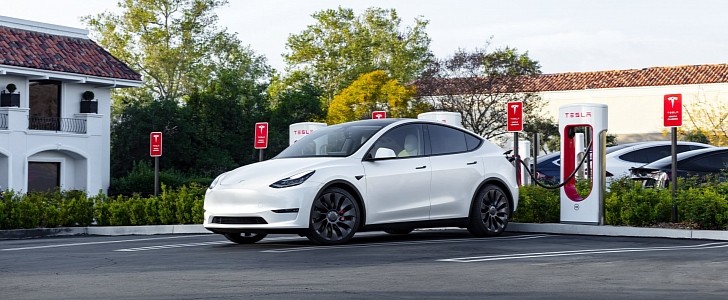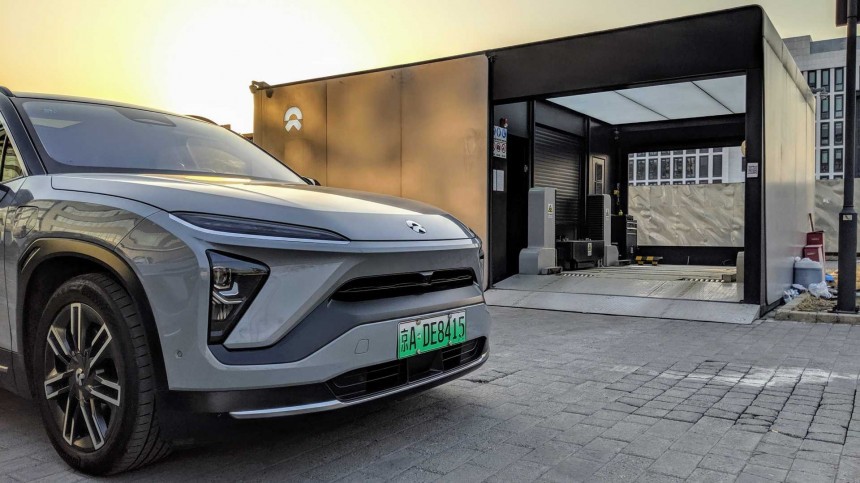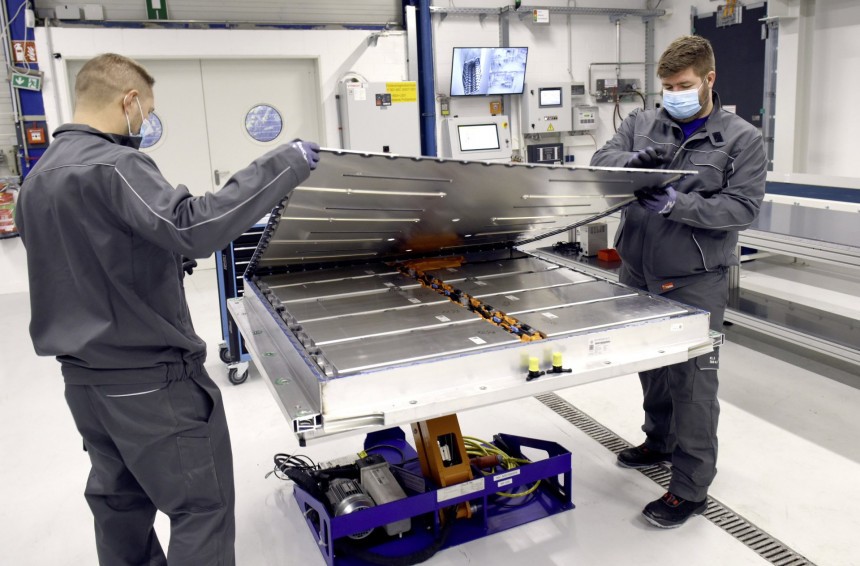Battery-swapping promised to solve the biggest problems of electric vehicles: cost and the time spent charging. But is battery-swapping the future of EVs?
Back in the days when a Nissan Leaf barely had enough range to cross the city boundaries, electric vehicles were considered a bigger problem than the one they tried to solve, city pollution. Not only had they a limited range of about 70 miles (113 km), but also lacked fast charging, with the charging time taking hours. Besides, there was almost no public charging. This is the context that prompted the idea of battery-swapping as the better alternative to charging the battery.
Battery-swapping allowed for a fully-charged battery to be installed in minutes. Besides, it was seen as a way of lowering the price of electric vehicles, as the cars were essentially sold without the battery. Instead, EV owners paid a subscription for the battery and so the “battery-as-a-service” concept was born. Better Place was the company that pioneered the concept, but failed to make it popular.
Better Place partnered with Renault for a trial in Israel and Denmark, but things eventually fell apart. Not only the battery-swapping station were eye-wateringly expensive, at $2 million each, but the Israelian company failed to get other EV makers onboard. In 2012 the company was liquidated, and the battery-swapping was eventually declared one of the most spectacularly failed technologies of the 21st century. But not before Tesla tried (and gave up) to offer battery-swapping for Tesla Model S one year later.
Today the battery swapping is still considered by many a viable alternative to charging the battery. While fast charging has become the norm in western countries, Chinese companies like Geely and NIO still push in the battery-swapping direction. Both operate in China an extensive network of automatic swapping stations that can change a car’s battery in less than a minute, without the driver even getting off the car.
It seems like the nirvana of EV ownership, faster and more convenient than refueling an ICE car at a gas station. NIO announced this September it completed the fourth million battery swap so it must be successful, at least for NIO and its customers. It seems we have a solid proposition here, why not make it the norm around the world?
Well, before jumping to conclusions we have to look at all the aspects of the battery-swapping vs fast charging dilemma. Surely there is something that made Tesla abandon the concept back in 2013, right? The American company cited several reasons including the cumbersome swapping stations and lack of customers’ interest, but there are other reasons to consider, too.
Perhaps one of the more important ones is about the technicalities of modern electric vehicles. Li-Ion battery is arguably the most complex component of an electric car, and they tend to become an integral part of the car’s rigid structure. They usually involve sophisticated temperature management systems to keep them cool under heavy acceleration and warm before plugging them into a fast charger for maximum performance. This means that water hoses go in and come out of the battery pack. You see now how swapping the battery is a big no in this case.
Besides, optimizing batteries for swapping means standardization and it’s quite difficult to get several automakers onboard to make it a large-scale enterprise. Hell, they couldn’t even agree on a charging plug. Even for NIO, it means having unique batteries for all its vehicles. While not impossible, this severely limits the options for a car maker. It also means simpler designs, less performant vehicles, and shorter battery life as water cooling is out of the question.
But the last nail in the coffin is the dizzying pace at which both electric cars and DC fast-charging stations advance. Today’s new EVs routinely deliver over 300 miles of range, with Lucid Air’s EPA range at a maximum of 520 miles. This is a lot more than most people drive in one leg and they still have to stop for a coffee, anyway, why not do it at a fast-charging station? In 20 minutes, you can recharge a modern car’s battery to allow for another long journey. In the case of Lucid Air above, we are talking about 300 miles of range for 20 minutes of charging.
The convenience of fast charging is undeniable, especially when you put that in contrast with the complexity of the swapping stations. This also comes with the need to have a lot of car batteries lying around and even ferry them from station to station, according to drivers’ demand. That’s not to say the battery-swapping is a dead end. It might be an opportunity for ride-hailing operators and other EV fleets where even the shortest downtime cuts into earnings.
Battery-swapping allowed for a fully-charged battery to be installed in minutes. Besides, it was seen as a way of lowering the price of electric vehicles, as the cars were essentially sold without the battery. Instead, EV owners paid a subscription for the battery and so the “battery-as-a-service” concept was born. Better Place was the company that pioneered the concept, but failed to make it popular.
Better Place partnered with Renault for a trial in Israel and Denmark, but things eventually fell apart. Not only the battery-swapping station were eye-wateringly expensive, at $2 million each, but the Israelian company failed to get other EV makers onboard. In 2012 the company was liquidated, and the battery-swapping was eventually declared one of the most spectacularly failed technologies of the 21st century. But not before Tesla tried (and gave up) to offer battery-swapping for Tesla Model S one year later.
It seems like the nirvana of EV ownership, faster and more convenient than refueling an ICE car at a gas station. NIO announced this September it completed the fourth million battery swap so it must be successful, at least for NIO and its customers. It seems we have a solid proposition here, why not make it the norm around the world?
Well, before jumping to conclusions we have to look at all the aspects of the battery-swapping vs fast charging dilemma. Surely there is something that made Tesla abandon the concept back in 2013, right? The American company cited several reasons including the cumbersome swapping stations and lack of customers’ interest, but there are other reasons to consider, too.
Perhaps one of the more important ones is about the technicalities of modern electric vehicles. Li-Ion battery is arguably the most complex component of an electric car, and they tend to become an integral part of the car’s rigid structure. They usually involve sophisticated temperature management systems to keep them cool under heavy acceleration and warm before plugging them into a fast charger for maximum performance. This means that water hoses go in and come out of the battery pack. You see now how swapping the battery is a big no in this case.
But the last nail in the coffin is the dizzying pace at which both electric cars and DC fast-charging stations advance. Today’s new EVs routinely deliver over 300 miles of range, with Lucid Air’s EPA range at a maximum of 520 miles. This is a lot more than most people drive in one leg and they still have to stop for a coffee, anyway, why not do it at a fast-charging station? In 20 minutes, you can recharge a modern car’s battery to allow for another long journey. In the case of Lucid Air above, we are talking about 300 miles of range for 20 minutes of charging.
The convenience of fast charging is undeniable, especially when you put that in contrast with the complexity of the swapping stations. This also comes with the need to have a lot of car batteries lying around and even ferry them from station to station, according to drivers’ demand. That’s not to say the battery-swapping is a dead end. It might be an opportunity for ride-hailing operators and other EV fleets where even the shortest downtime cuts into earnings.














